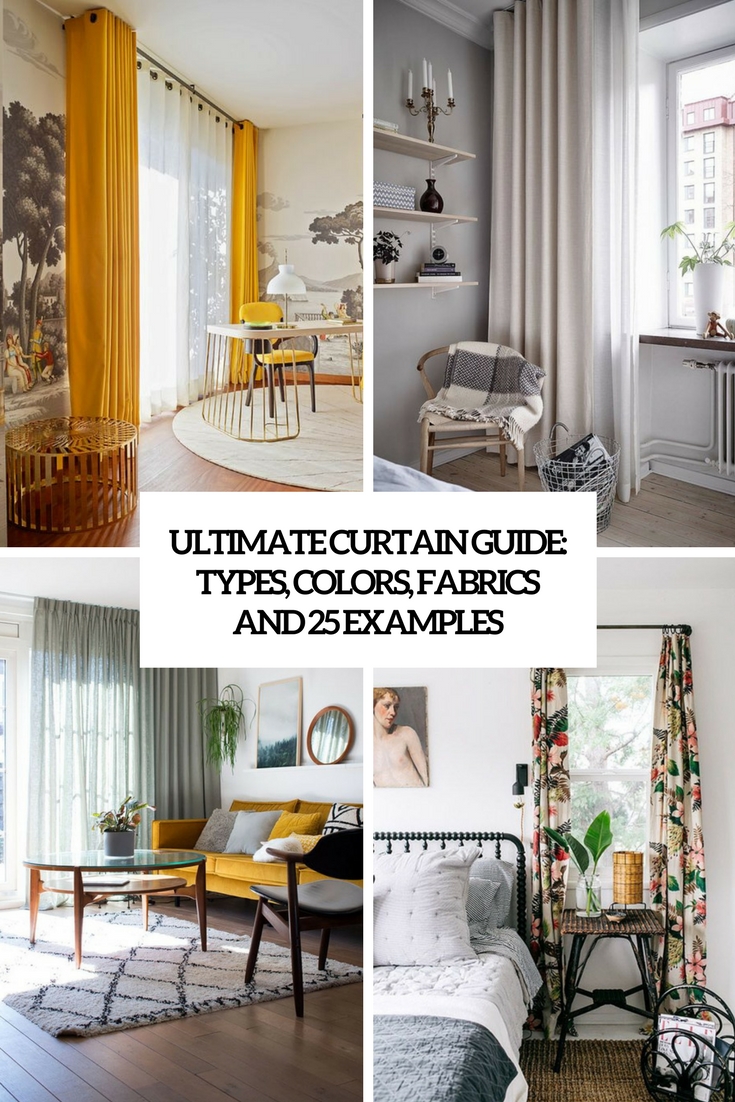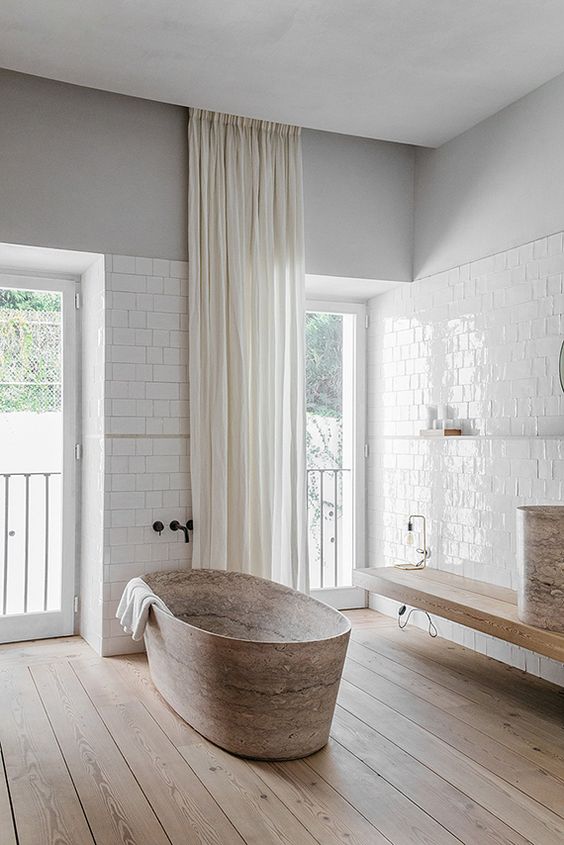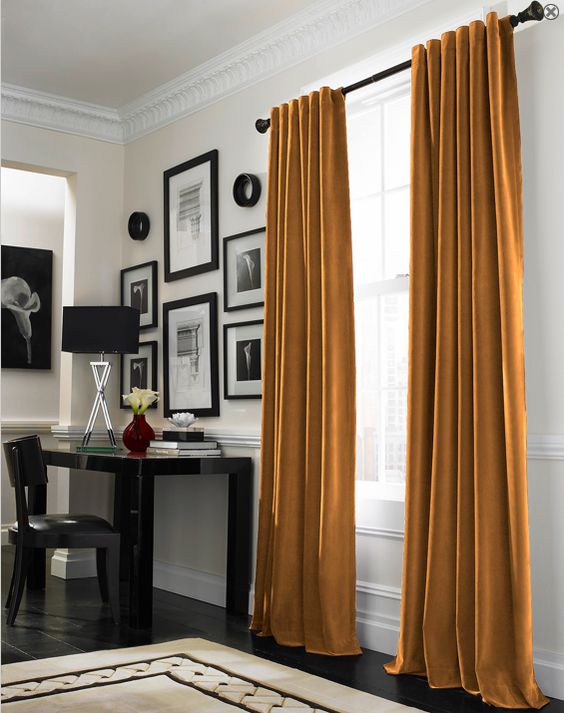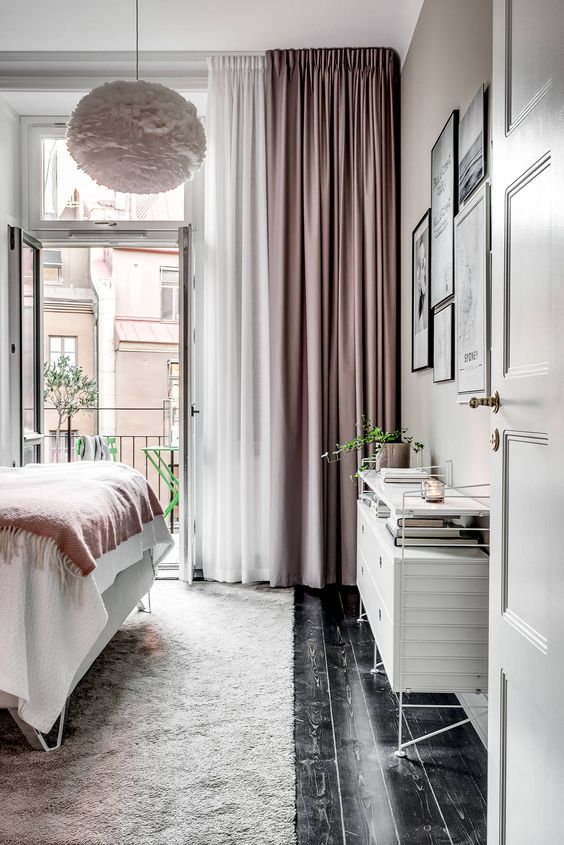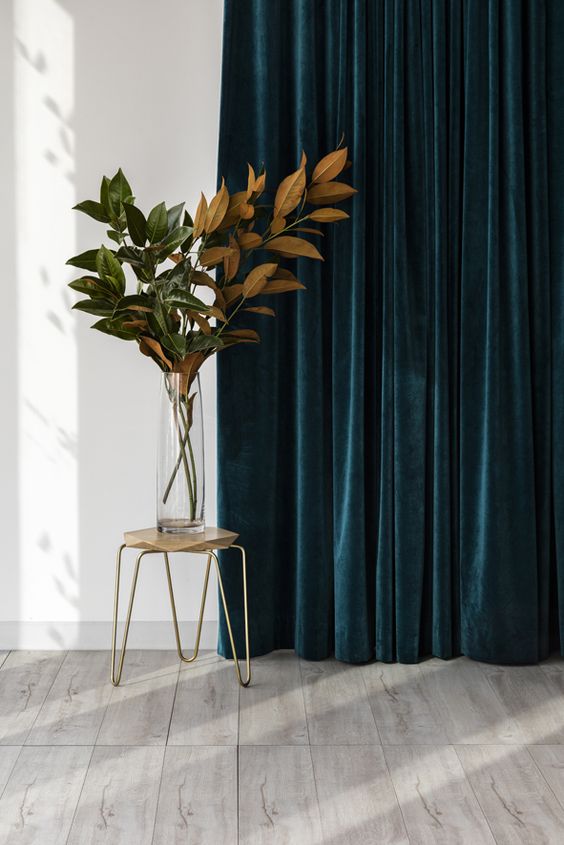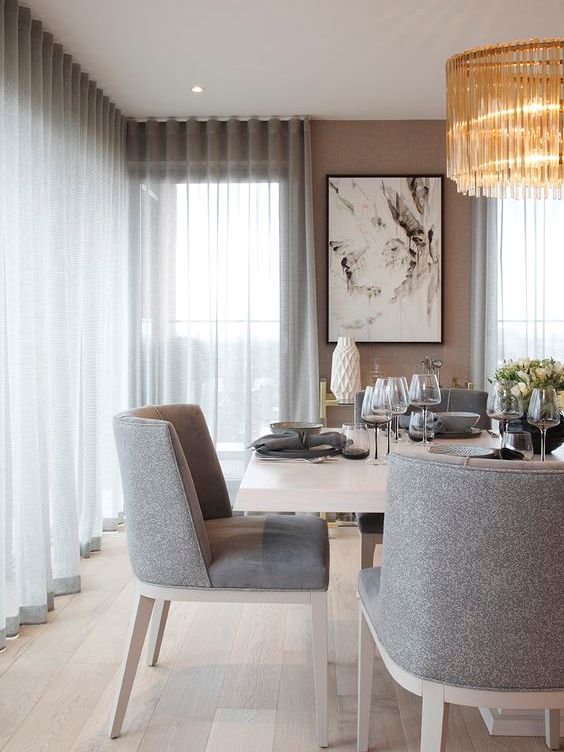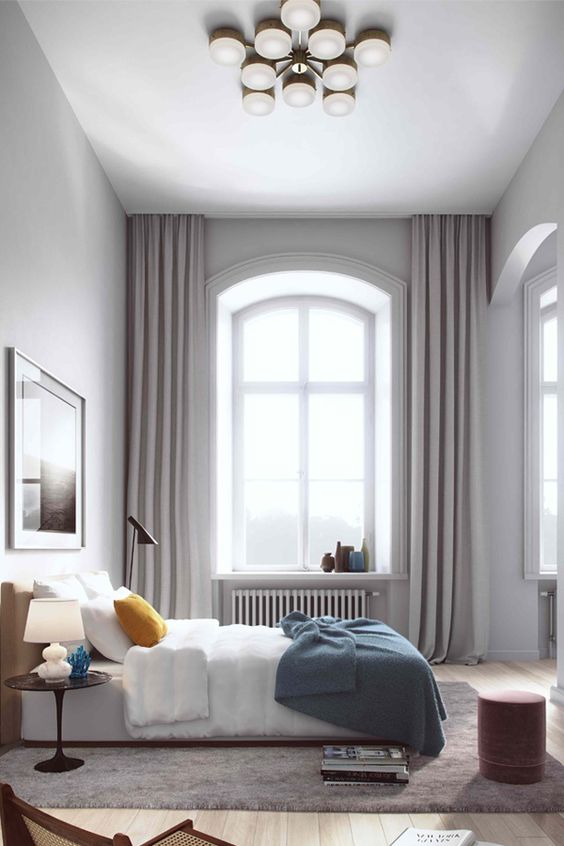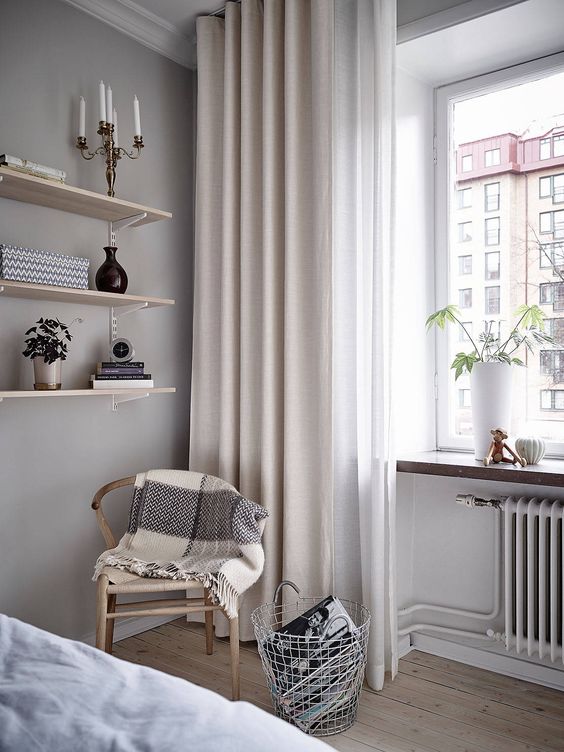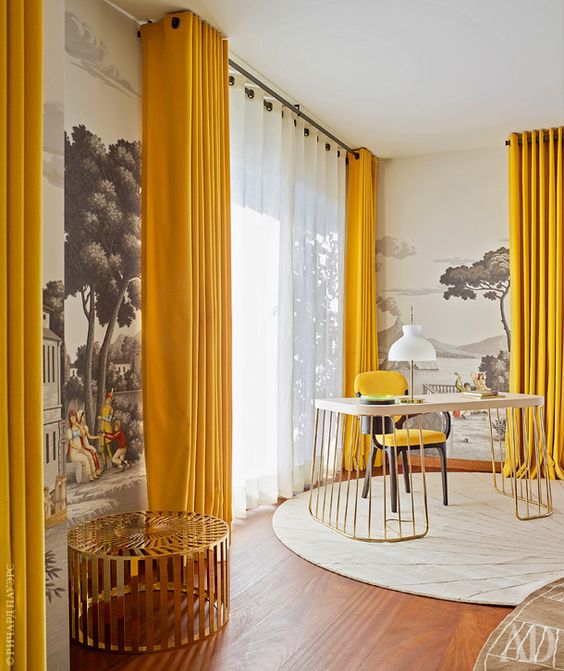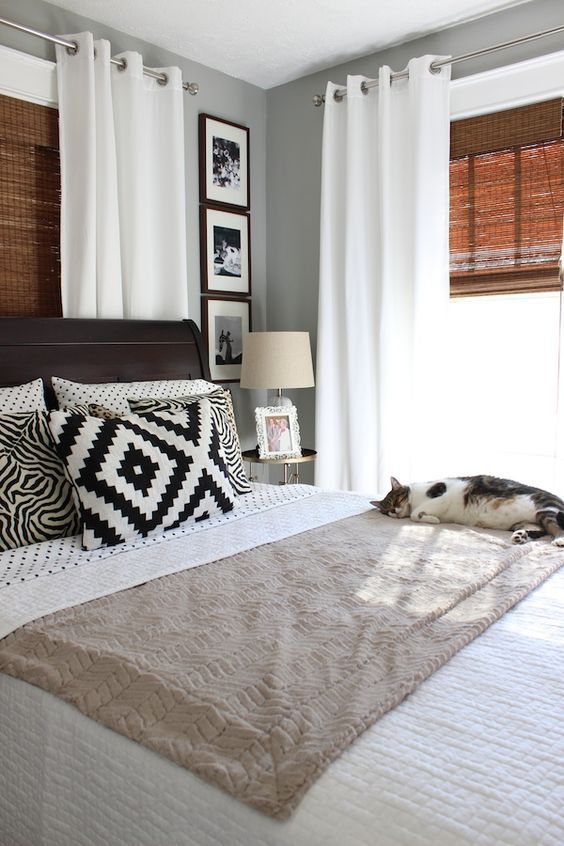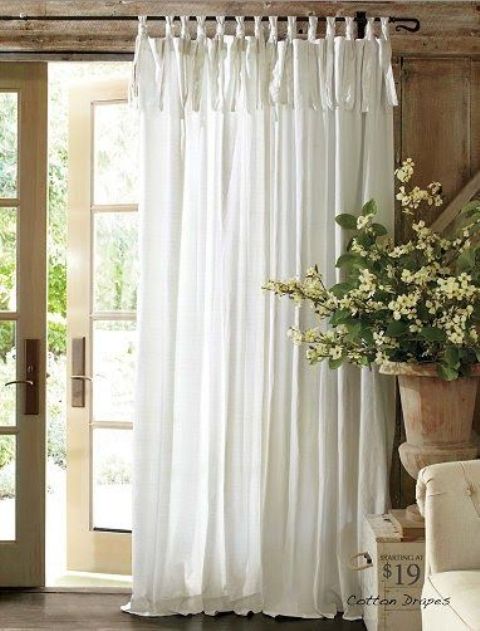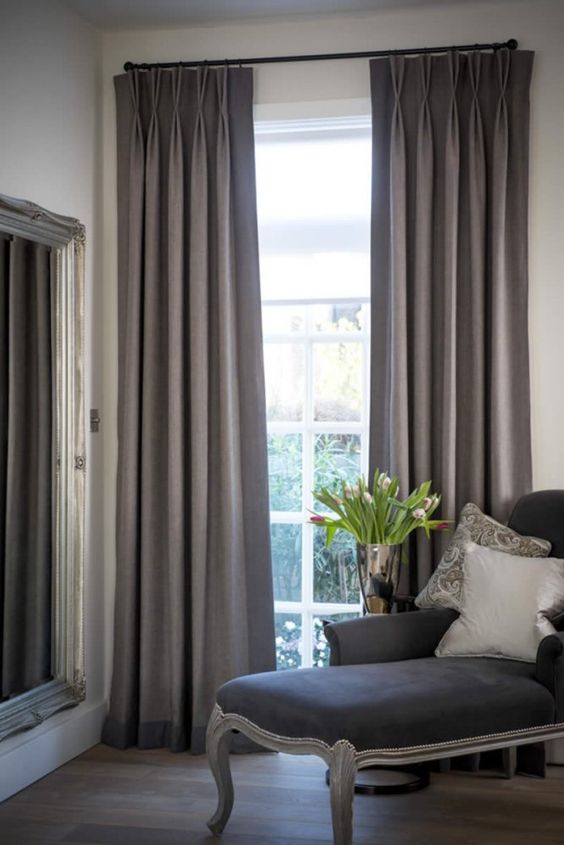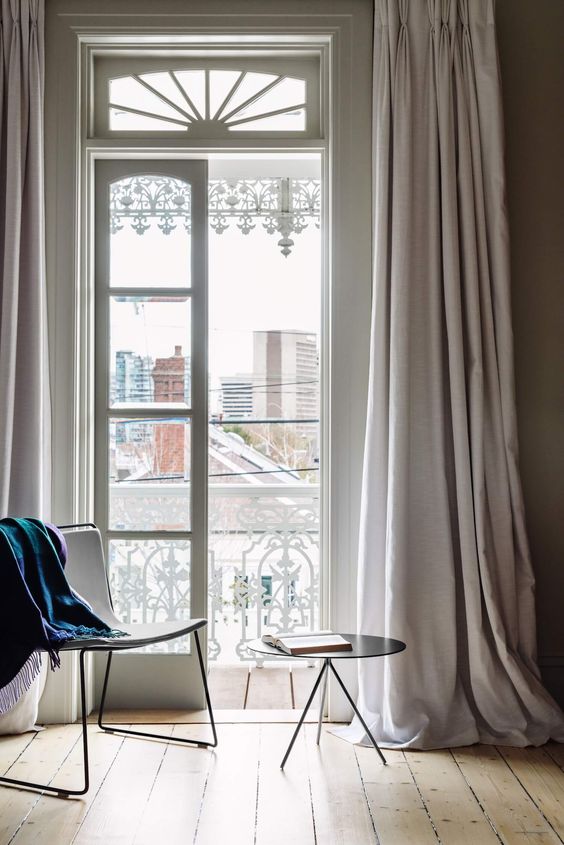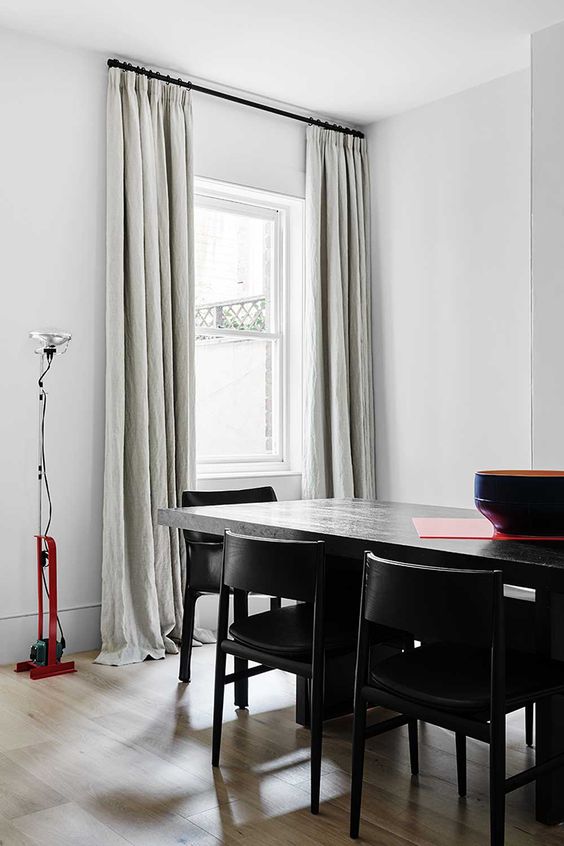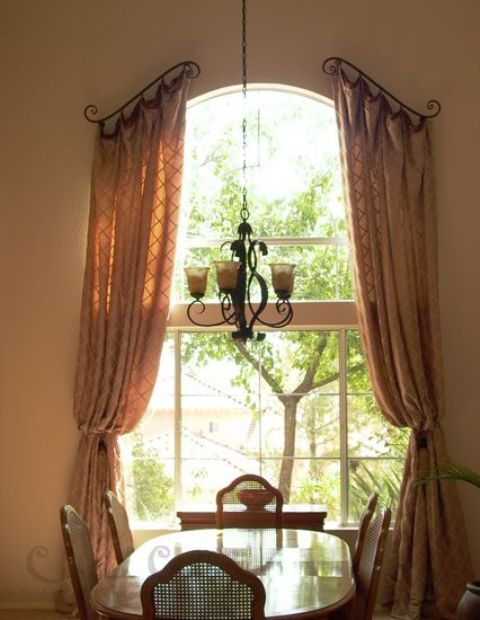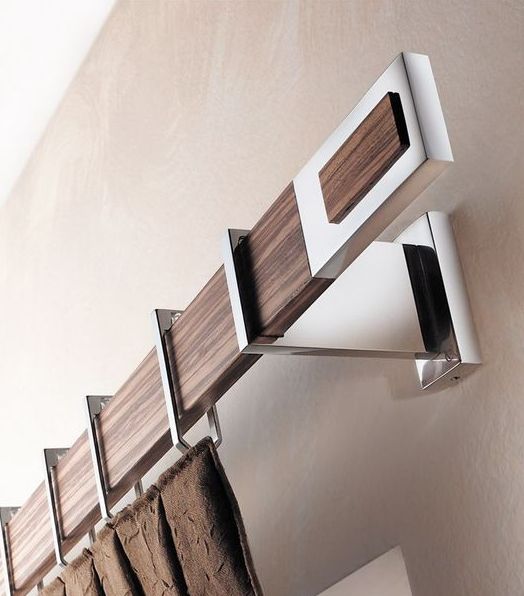We’ve already shared many window treatment ideas but why have them at all? Window treatments of any kind including curtains is your way to control how the light enters the space, keep some privacy and adds style to the room at the same time. Choosing window treatments is difficult but I’d like to share some ideas with curtains telling you more precisely what they are, how to use them and so on.
Definition
Curtains are usually unlined pieces made from lighter fabrics than drapes, they are casual and homey and are made of washable fabrics. They won’t block much light but they are often available off the shelf and don’t cost much – a great idea for a tight budget. If total privacy is a must, go for additional blinds. Curtains are welcome in every space, from a bathroom to a bedroom, and rocking some will change the look of your space.
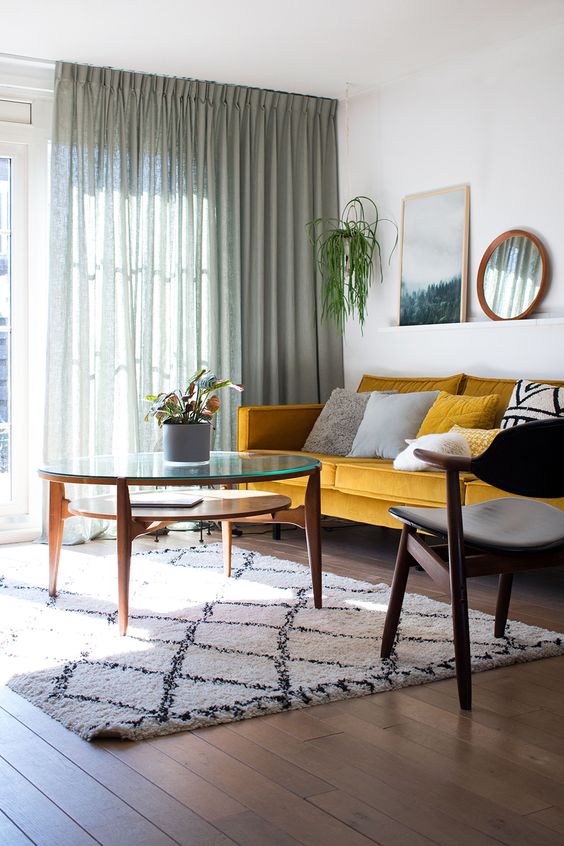
Curtains are a budget-friendly idea that doesn't block much light but they add coziness and comfort to the room.
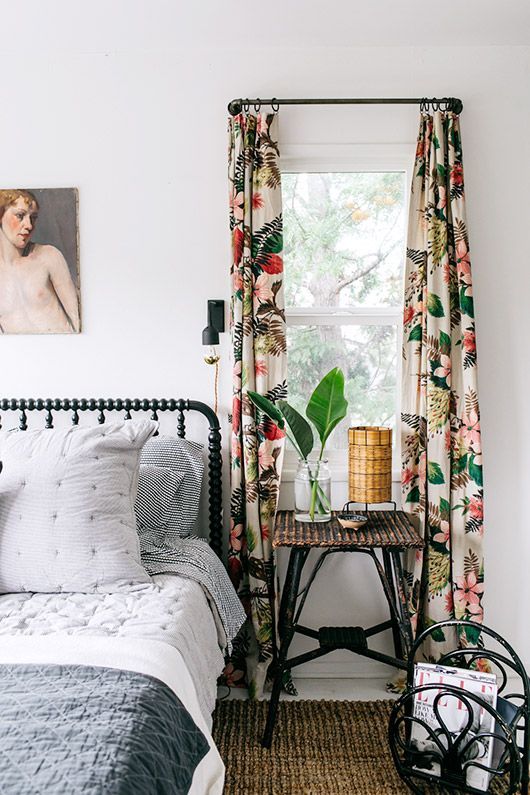
They aren't lined up but may add a strong decorative effect like here - a touch of color and print to the space.
Colors And Fabrics
Go for basic colors if you want to use them for a longer period of time. Stick to neutrals if you want to freshen up the space, besides, it’s rather a timeless option. If your space deals with a lot of sunlight, bright or dark colors tend to fade, which won’t happen to neutral ones.
The look and style of your room will be determined and highlighted with the fabric that you choose for the curtains. If they’re too heavy, they may not fold crisply when drawn; too light and they may not fall well. Bring large samples of this fabric and hold them up where the curtains will go, it will help you to figure out if they fit or not. If you are going to drape or pleat the fabric, you’ll need a piece of at least 2 yards.
Designers advise that linen, silk, faux silk and velvet are optimum choices because they have the best qualities for hanging and draping. Faux silk is more durable than usual silk, and velvet is the best choice for blocking any light and insulating the window from drafts and outdoor temperatures.

Many of us prefer pleated curtains and choosing fabric for them, bring at least 2 yards of it to find out how it pleats.
Length
Six inches above the window frame is a typical place to mount the curtains, it is possible to make a room look taller or more dramatic by installing them farther above the window frame.
Measuring for curtains, make sure that you measure from the top of the window to the floor, then add the distance above the window to the mount. You will also need to add length if you want the curtains or drapes to puddle in the floor. You should add two or three inches for a more tailored puddling, but can add more for a luxurious pool of fabric on the floor. Curtains that hang flush with the floor are a modern look. As for the width, add four to eight inches on both sides and then doubling the total to get the actual size of the drapes you need.
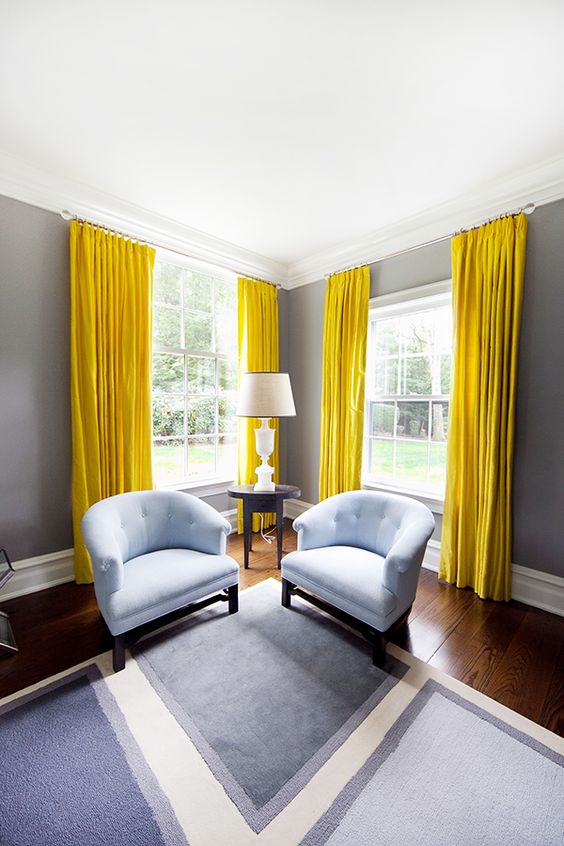
Curtains that are flush with the floor bring a more modern and minimalist feel to the space.
Types Of Curtains
There are several types of curtains to choose from, all of them will bring a different look and touch to your space.
Rod pocket/heading curtains are the simplest ones to hang because the top has a pocket in the fabric, through which you can slide the curtain rod. If you need to regularly pull the curtains open and closed, this isn’t what you need.
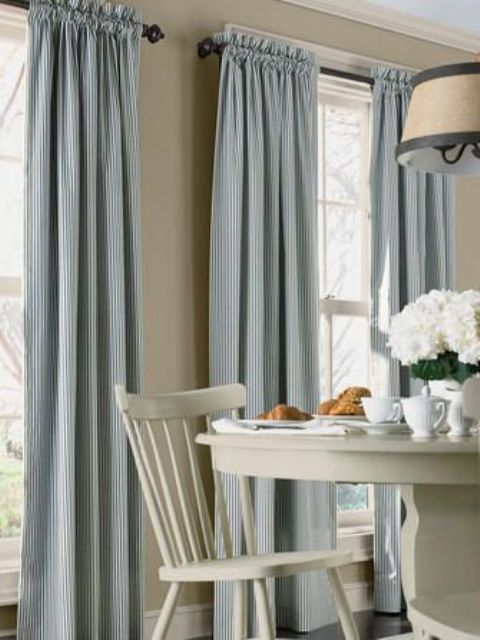
Striped rod pocket curtains is a nice decorative solution but they aren't a good thing for those who need to open and close the curtains.
Grommet/eyelet curtains are contemporary and casual-looking pieces that make nice pleats if you want. This is a great idea for closing and opening.
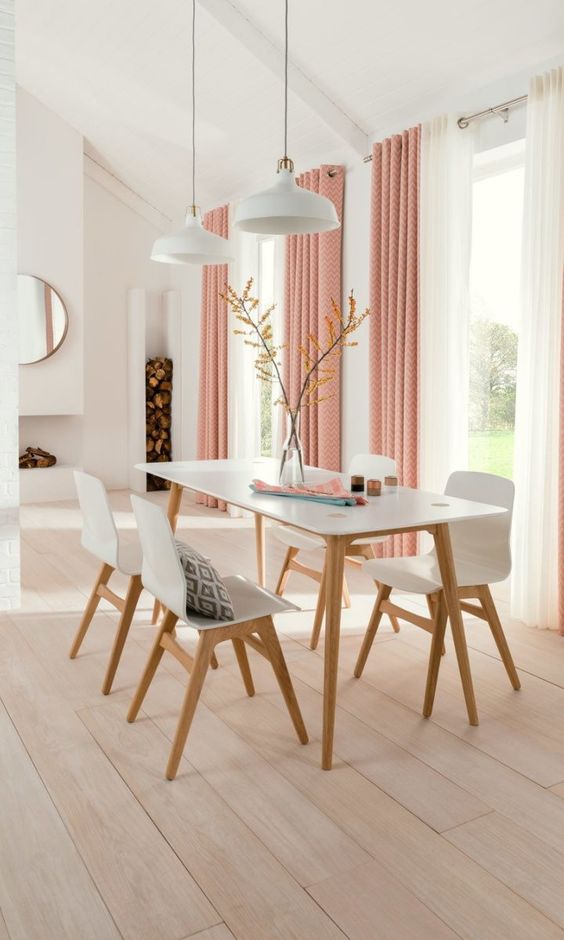
Pink printed and white grommet curtains for a soft colorful touch and a cozy look in the dining room.
Tab-top curtains feature flat loops of fabric, usually of the same fabric as the curtain itself. They can get a more casual look or become more dressed up: with embellished loops, tie tops and more.
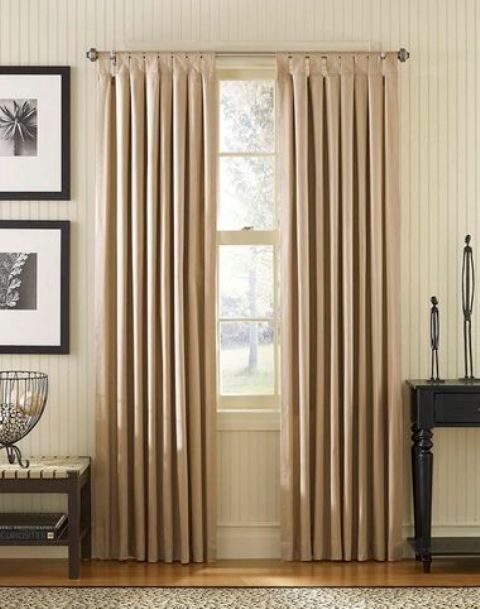
Tab-top curtains can also look more dressed up if you choose proper fabric or decorative loops and rods.
Pinch pleated curtains have small sets of pleats, the pleats can have different width. These curtains attach to the rings or a traverse rod using metal pin hooks that are inserted at the back of each group of pleats.
Pencil pleated curtains feature three-inch width pleats. These types of curtains have successive small pleats across the entire top of the panel.
Hardware
Choosing hardware is an important part here because the look of your windows depends on them, too. There are basic curtain rods, traverse and tension rods to choose from, the first are for a casual and inexpensive look, the second ones are ideal for heavy curtains and the third option is great for rentals – you can easily remove them. If you want a decorative effect, go for coordinating rings, rods, finials and holdbacks to tie the look together and achieve a cool look.
